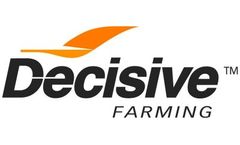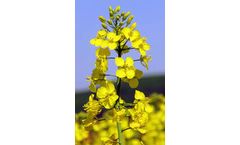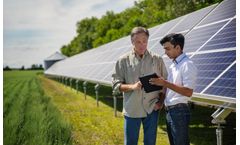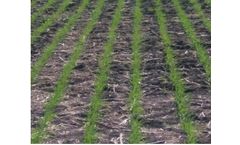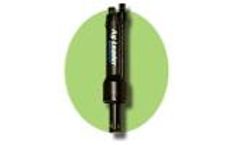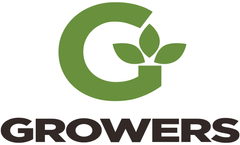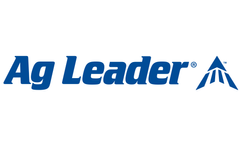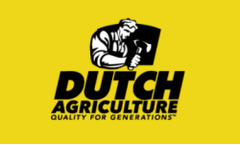Seeding Rate Articles & Analysis
55 articles found
l Ecological and Functional Implications Genome size is correlated with ecological and physiological traits, such as seed size, growth rate, and stress tolerance. Understanding these relationships helps predict how plants respond to environmental changes. ...
During drought or dry conditions, salinity and pH levels can change quickly in the soil. While the forecast shouldn’t entirely dictate how you manage your farm, understanding and performing the best farming practices when adding seed-placed nutrients can help save your yields when the rain fails to ...
When it comes to applying seed-placed fertilizer, it is important to find the suitable application rate for each specific soil type and composition. ...
The seed supplier should also provide information such as the seed’s chronological age, which will aid seed rate calculations.De-bag the seed into boxes upon arrival and store in a cool dry place to reduce storage diseases and sprouting – humid conditions are a perfect place for fungal and bacterial pathogens ...
It tailors seed rates to customer requirement, planting date and proposed burndown and harvest date, and growers can also model several scenarios to see what affect altering seed rate or planting date will have on yield and size distribution of tubers in their ware crops. ...
This data was then automated and mechanized, culminating in variable rate seeding technology that allowed farmers to upload a “script” that then directed their seeder to vary seeding rates as precise field locations as per the script. The same variable rate concept has since been adapted to ...
ByAGRIVI
Craig Bews adopted variable rate technology on his Eatonia, SK farm over a decade ago. Bews has always had a passion for farming. A third generation farmer, Bews and his son, Darren, farm 10,000 acres in west central Saskatchewan. After trying a variety of crops over the years, they now grow primarily durum, canola and red lentils. The name ‘Duthie Farms’ derives from Craig’s ...
By regulating seed coat development and reducing seed coat rate, the specific gravity of embryos can be increased, and then the seed oil content can be increased. ...
Farm management software takes collaboration between your on-farm team and trusted advisors to the next level They say two heads are better than one. For today’s progressive farmer, this sentiment couldn’t be more true. With land values, input costs, machinery pricing and an increasingly competitive global market, maintaining an edge has never been so important to your operation. ...
But, because canola seed is expensive and canola companies were invested in optimal production, seeding rate practices changed. ...
Spring planting season in the Midwest is only a few months away. As we get closer to that go date, you likely are thinking through ways you can improve your performance from last year. Planter technology is one of the smartest investments you can make. But with several options, which one is right for you and your farm? At Ag Leader, we offer four solutions that can help improve your ...
When you use VRT to apply the right amount of nutrients combined with the ideal seeding rate, you can produce more from every acre of your land while reducing the amount of wasted product. You can maximize every opportunity when you customize both seeding and crop nutrition applications to each zone. The most and least productive areas in each ...
ByGrowers
It combines the soil drying and warming benefits of conventional tillage with the soil-protecting advantages of no-till by disturbing only the portion of the soil into which the seed is placed. Alongside the savings in fuel, labour and machinery, using the DTS can also reduce seed/fertiliser rates due to precise strip placement. ...
Initially used in sprayers to apply pesticides, Variable Rate Technology (VRT) is a tool that allows farmers to apply fertilizer, water, chemicals, and seed at different rates across a field. ...
ByGrowers
Getting the seed in the ground perfectly is your best chance for having a bumper crop year, making planter technology one of the smartest investments you can make right now. But with several options, which one is right for you and your farm? Here’s a candid look at the pros and cons of ...
With that, many ask: what return on investment (ROI) does variable rate technology (VRT) deliver for my farm? The truth is, it’s a loaded question precision agronomy companies get asked a lot. ...
Precision agriculture is helping farmers like you understand more about your fields than ever before, while incorporating variable rate (VR) technology to up productivity and minimize waste. While Prairie growers have become more familiar with VR fertilizer strategy over the years – precisely placing the right applications for nutrient uptake in the right areas of the ...
Of course, the decisions I make between now and then influence how good of a harvest season I’ll have. Over the years, using variable rate seed prescriptions has helped ensure I’ve got the right amount of seed in the right areas of the field to make a return. ...
Where it’s colder and the soil has a lot of moisture, you really need to work it to achieve proper seeding conditions.” RIGHT RATE A complete fertilizer is a mix of the three main nutrients that plants need to grow: nitrogen (N), phosphorus (P) and potassium (K). The rate is the combination of how much of each nutrient is needed for ...
Bayer is investing more than $2.7 billion annually in research to provide a complete portfolio of seeds and traits, crop protection products and digital applications that is unmatched in our industry. ...


